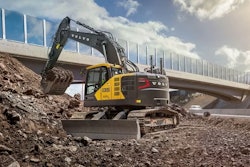“Green” or environmentally friendly construction practices are no longer for a niche market – they’re a growing trend for nearly every state in the nation.
Building green could also boost both a contractor’s profits and reputation, all while helping the environment. But only if the practice can overcome an image of being expensive and difficult to understand.
“Like any new program, there is a learning curve to it,” said Brendan Owens, program manager of Leadership in Energy and Environmental Design for the U.S. Green Building Council. “How fast contractors get to speed is dependent on how skilled they are in changing how they do business.”
It’s this learning curve the USGBC hopes to lessen for contractors interesting in applying the green building standard Leadership in Energy and Environmental Design. The green building rating system is a voluntary, consensus-based national standard for developing high-performance, sustainable buildings.
LEED standards are being applied to all aspects of construction, including residential and commercial projects.
Owens said contractors shouldn’t dismiss the green practice as expensive or confusing. He said a little research on contractors’ part could put the practice on par with traditional construction methods.
Environmentally friendly paints, carpet and other materials can all be obtained at a similar price as their standard counterparts. Owens said other building materials, such as certified wood, would be slightly more expensive. “If you are able to optimize other building [aspects], you can deliver at or below cost from other systems,” he said.
Principle in staying at standard construction costs is the integration of the contractor into the design process. In this way, green-building practices can be worked into the construction plan before conflicts occur. Owens said certain design ideas and material usage have to be implemented in construction, and contractors need to understand the reasons behind the decisions.
“Other teams could benefit from the experience contractors could bring to the project,” he said.
By meeting the LEED-certification system requirements – a process that takes about one to three months – Owens said contractors can be certain the construction project will be environmentally standard.
Some of the LEED requirements are: choosing a sustainable site; optimizing water use and wastewater technology; using reusable energy sources; recycling materials for construction use; and using efficient ventilation and daylight controls for indoors.
The cost of being certified by the USGBC varies based on size and cost of the structure. At least 200 buildings have been LEED certified nationwide, with more than 1,800 projects currently in the certification process. Owens estimates a 3 percent to 5 percent market penetration in the next five years.
The National Association of Home Builders offers another set of green construction guidelines. That group’s jump into the green trend early this year was prompted by the rise in demand for environmentally friendly residential buildings.
“This is something that I refer to as reaching critical mass,” said Ray Tonjes, a homebuilder from Austin, Texas, and chair of NAHB’s green building subcommittee.
Tonjes said green building practices are simply good building practices that all contractors should follow. Like Owens, he said the core concept of green building is planning.
“That doesn’t necessarily cost you anything,” he said. “You can actually reduce the cost of equipment before you downsize it.”
The NAHB guidelines were developed under contract by the NAHB Research Center in a process involving more than 60 stakeholders from the green building industry, including architects, manufacturers, home builders, environmentalists, government agencies, suppliers and trade organizations.
“The builder and end user have had the opportunity to participate,” Tonjes said. “That is pretty darned important.”
The guidelines are primarily tailored to single-family homes, but can be modified for use in multi-family homes and custom homes.
Tonjes said many contractors are beginning to market their businesses as specialists in green construction – something that is helping them attract customers and drive down the price of the practice because material manufacturers can introduce a green-building product and get it to a cost-effective point quicker.
Considering the benefits USGBC is touting – reduced excess energy and resources, healthier and more productive employees, a 20 percent to 50 percent reduction in utility bills – green construction is a practice that could drift from trend to standard in the next few years.
“The consumer is far more knowledgeable about green building practices; this will help drive the industry and the concept,” Tonjes said.
Patrick Beeson can be contacted at [email protected].









